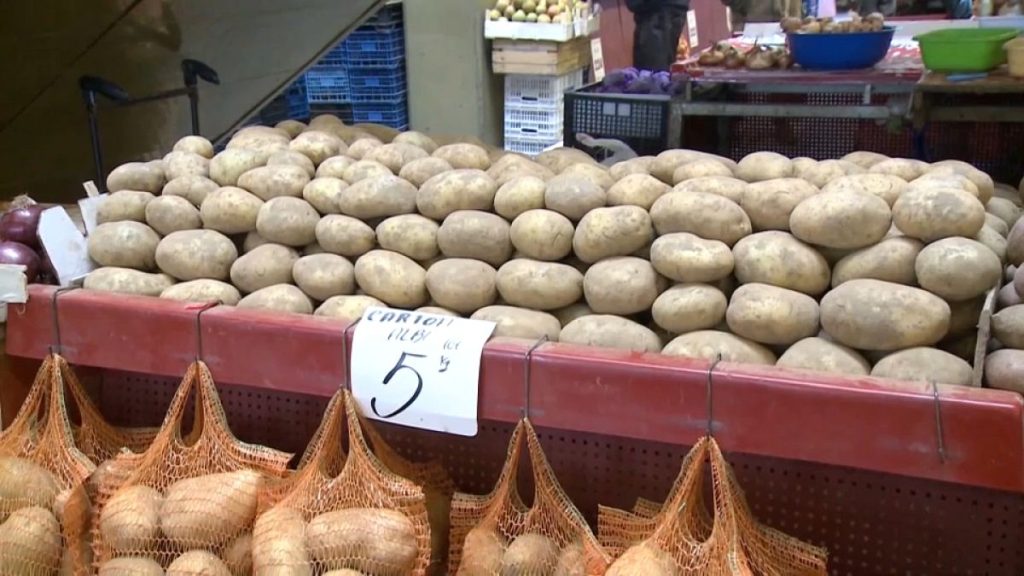The Romanian potato industry finds itself in a precarious situation, grappling with a confluence of challenges that have led to a significant decline in production. Seed costs have doubled in recent years, placing a substantial financial burden on farmers. Simultaneously, the agricultural labor market has tightened, making it both more expensive and increasingly difficult to find workers. These factors, combined with the extreme weather conditions of 2024, characterized by drought and heat, have exacerbated the downward trend in potato production, reaching an eight-year low. The repercussions of this dwindling supply are felt throughout the Romanian market, with domestic production meeting only half of the country’s consumption needs, resulting in higher prices for consumers and an increased reliance on imported potatoes.
This decline in Romanian potato production is particularly concerning given its significant contribution to the EU’s potato farming landscape. Romania accounts for nearly one-third of all potato farms in the European Union, highlighting its importance within the sector. However, the country’s yield per hectare lags significantly behind the EU average, with Romania producing an estimated 14.8 tonnes per hectare in 2024 compared to the EU average of around 35 tonnes. This disparity underscores the challenges faced by Romanian farmers and the need for improvements in productivity and efficiency to bridge the gap. The increasing reliance on imports to meet domestic demand further emphasizes the vulnerability of the Romanian potato market and the potential for price volatility.
The rising costs of essential inputs, such as seeds and labor, are placing immense pressure on Romanian potato farmers. The doubling of seed costs represents a significant financial hurdle, particularly for smaller farms with limited resources. The scarcity and rising cost of agricultural labor further compound these challenges, making it increasingly difficult for farmers to maintain their operations. Many farmers are forced to make difficult decisions, with some even abandoning potato cultivation altogether due to the prohibitive upfront costs. This exodus from the industry threatens the long-term viability of the Romanian potato sector and contributes to the declining domestic production.
The drought and extreme heat experienced in 2024 have dealt a further blow to Romanian potato farmers, exacerbating the existing challenges. These adverse weather conditions have significantly impacted yields, further reducing the already dwindling supply of domestically produced potatoes. The combination of economic pressures and climatic challenges has created a perfect storm, pushing the Romanian potato industry to the brink. The reliance on imported potatoes to fill the supply gap has become increasingly necessary, but this dependence exposes the Romanian market to fluctuations in global potato prices and potential disruptions in supply chains.
The situation in Romania is not an isolated incident. The decline in potato yields is a broader trend affecting other EU countries as well. A significant portion of the EU’s potato production is concentrated in just five countries: France, Poland, the Netherlands, Belgium, and Germany. Between 2000 and 2023, the EU experienced a substantial decline in harvested potato production, dropping by 27.9 million tonnes, equivalent to a 36.7% decrease. This wider decline in European potato production further complicates the situation for Romania, limiting the availability of imported potatoes and potentially driving up prices.
The decline in potato production in Poland, a major exporter to Romania, adds another layer of complexity. Poland has historically been a significant supplier of potatoes to the Romanian market, helping to meet the shortfall in domestic production. However, with Poland also experiencing a decline in potato yields, the availability and affordability of imported potatoes from Poland are now under threat. This situation further underscores the vulnerability of the Romanian potato market and the urgent need for strategies to bolster domestic production and reduce reliance on imports. The interconnectedness of the European potato market highlights the need for a coordinated approach to address the challenges facing the industry, ensuring a stable and sustainable supply of potatoes across the EU.














